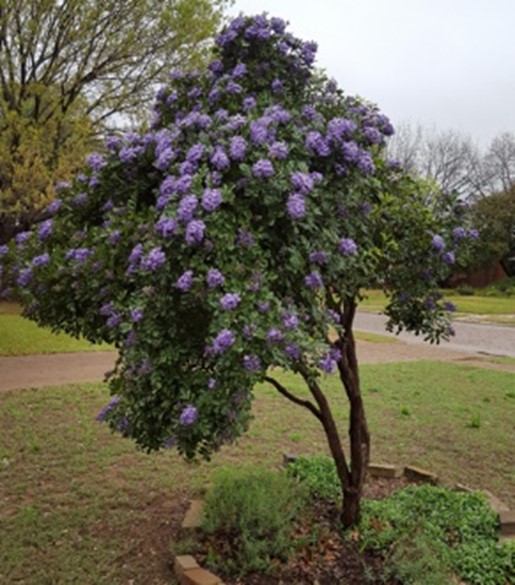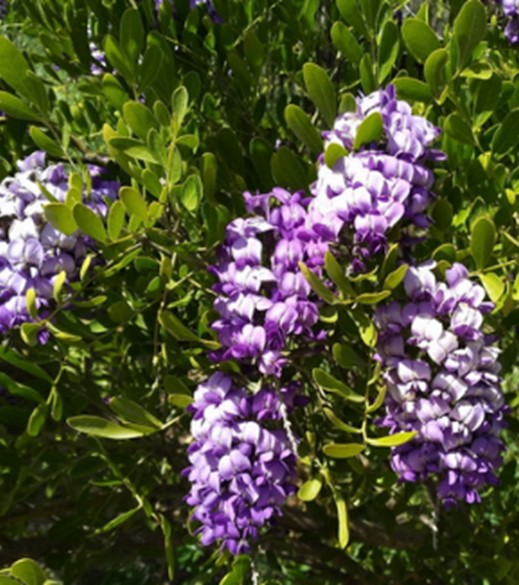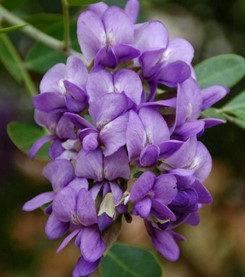Texas Mountain Laurel
Dermatophyllum secundiflorum



Characteristics
- Type: Shrub (can be trained as a small tree)
- Zone: 8 – 11
- Height: 8 – 15 Feet
- Width: 6 – 10 Feet
- Blooms: February – Mid April
- Bloom: Purple (Fragrant)
- Sun: Full
- Water: Low
- Maintenance: Low
- Soil: Well-drained
- Attracts: Bees, Butterflies
- Texas Native
Culture
Texas Mountain Laurel is one of the first plants to bloom in the spring. They begin to bloom in February and continue through mid-April. You can’t miss the unique fragrance of the flowers if you walk past this drought tolerant tree while it’s blooming. It’s one of sweetest scents that your garden will bring you. The scent is often described as grape bubblegum or grape soda, and it’s almost intoxicating. If you are also looking for a small, native tree or large bush to bring to your garden this spring, give the fragrant native Texas Mountain Laurel a try! It is also known as Mescal Bean, but it is not related to mescal, which is derived from particular agave plants and is the basis for tequila.
Noteworthy Characteristics
Texas Mountain Laurel is a native evergreen shrub that can be trained as a multi-trunked small tree. It can be pruned to keep it shrub-like. While it can reach 30’ tall if given lots of water, it usually holds in the more manageable and desirable 10’ to 15’ range and gets about 10’ wide. It is highly drought tolerant after getting established for a year or two and is cold tolerant to about 10°F. It prefers poor, rocky soil, but is tolerant of any well-drained soil. It is native to central Texas, running west to New Mexico and south to central Mexico. Unsheared Texas Mountain Laurels make excellent informal screens or hedges, but it can also serve as a lovely accent tree in a tight space. Planting lighter color or contrasting color plants in front really accents the dark green, leathery foliage. The lacquer-like orange, red, or even maroon seed shells are beautiful and were prized by Native Americans for decorating clothing and ceremonial uses. The seeds inside the extremely hard shell contain an alkaloid known as cytisine or sophorine, which is highly poisonous if swallowed. It is related to nicotine and is a narcotic and hallucinogen. Keep away from children and pets to be safe!
Problems
Texas Mountain Laurels are not bothered by many pests; however, the Genista moth larvae can decimate the foliage on a full-grown tree in a few days.
Garden Uses
Shrub, small tree, patios, courtyards.